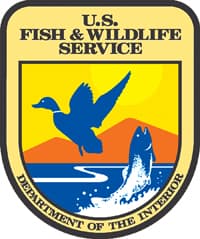U.S. Fish and Wildlife Service Begins Special Drought-related Monitoring for Delta Smelt
OutdoorHub 02.05.14

As part of the federal response to California’s severe drought, the U.S. Fish and Wildlife Service today announced it has begun, with assistance from the Bureau of Reclamation, focused drought-related surveys for delta smelt this week at Jersey Point on the San Joaquin River. The monitoring program will provide the Service, and state and federal water managers, with near real-time information about the location of delta smelt if they move closer to water diversions in the southern Delta.
Delta smelt are currently not near the water projects and entrainment risks are low. If there is substantial rain that increases Delta flows and the turbidity of Delta waterways, delta smelt could move closer to the water project diversions.
“The Service continues to confer with all coordinating agencies on measures to protect delta smelt while providing water to meet health and safety needs of Californians,” said Ren Lohoefener, Director of the Services Pacific Southwest Region. “The multi-party coordination is essential to balancing human and environmental needs during this difficult drought year.”
Staff from the Service’s Lodi Fish and Wildlife Office will sample twice per week at Jersey Point for two weeks – weather allowing – to complete the special drought-related sampling for delta smelt. This level of sampling is estimated to provide at least a 99 percent probability of detecting delta smelt even if they are at very low density in the lower San Joaquin River. By timing the sampling to focus on the flood tide, the chances of observing delta smelt in the trawls are maximized.
Additional drought-related sampling for delta smelt will be conducted if a rain storm (or storms) occur and are sufficient to substantially increase water turbidity in the Delta, at least on the Sacramento River side of the Delta. It is anticipated that 10 to 14 consecutive days would be needed to assess the timing and magnitude of any movement of smelt into the San Joaquin River side of the Delta. This information would be used to evaluate the likelihood of delta smelt being entrained and should provide the Service and the water managers opportunities to implement strategies that will reduce the risk to delta smelt while providing opportunities to meet water export goals.
With the current lack of rainfall, delta smelt entrainment and salvage at the Tracy pumps has been non-existent during the 2014 Water Year. No restrictions on water exports have been imposed since the Water Year began in October.
The delta smelt, native to and only found in the San Francisco Bay and Sacramento–San Joaquin Delta Estuary in California, is a once plentiful Delta fish species that has plummeted to record low levels and is listed as a threatened species under the federal Endangered Species Act, and as an endangered species by the State of California.

